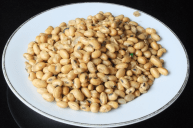Peanut allergies affect around 1-2 percent of the global population and 2 percent of children in the U.S. Those numbers have nearly tripled in two decades and studies are showing it will only get worse. Exposure to peanuts and peanut products in those affected can lead to serious allergic reactions including anaphylaxis and even death, making it necessary for manufacturers to not only label foods containing peanuts, but to alert consumers if the food was manufactured in a plant that processes or houses peanuts.
Previously, as per a study released by the American Academy of Pediatrics in 2000, parents were advised by medical professionals to delay exposure of peanut containing foods and products to children until they reached 3 years of age. Early exposure, it was believed, could risk life-threatening allergic reactions.
On January 5, 2017, the National Institute of Allergy and Infectious Diseases (NIH) changed all that when they released new guidelines for pediatricians and allergists, per the Washington Post.
https://www.instagram.com/p/BO5OnzUgA6P/?tagged=peanutallergy
Validated by a LEAP (Learning Early About Peanut Allergy) study, the new recommendations are published in the Journal of Allergy and Clinical Immunology and fall into three categories: children at high risk of developing a peanut allergy (this includes infants with severe asthma, egg allergy or both), children with mild to moderate eczema (those less likely to have an allergy), and those with no eczema or food allergy and no history of such.
The LEAP study was "published in 2015 in the New England Journal of Medicine [and] showed that children at high risk who regularly consumed peanuts as infants had an 81 percent lower chance of developing a peanut allergy by age 5."
For the first group, parents are encouraged to introduce peanut-containing food at 4 to 6 months of age. For the second group, parents should introduce peanut-containing foods at 6 months of age. Those children in the third group can be fed peanut-containing foods at any age.
https://www.instagram.com/p/BO5S8vulE8L/?tagged=peanutallergy
Experts believe that changing the time frame for introducing peanuts to an infant's diet can go a long way in decreasing the number of peanut allergies in society.
From the guidelines provided by the NIH, here are the four steps to introducing peanuts to an infant, from the Washington Post.
1. Prepare a full portion of a peanut-containing food such as peanut butter dissolved or thinned with water, peanut butter, peanut flour or powder mixed with a fruit or vegetable puree or several pieces of Bamba, a puffed maize snack with peanuts, which can be softened with water or not depending on the child's age or preferences.
2. Offer your infant a small part of the peanut serving on the tip of a spoon.
3. Wait 10 minutes.
4. If there is no allergic reaction after this small taste, then slowly give the remainder.
Remember that these guidelines are merely recommendations. Children will communicate what foods they are ready for, when they are ready for them.




